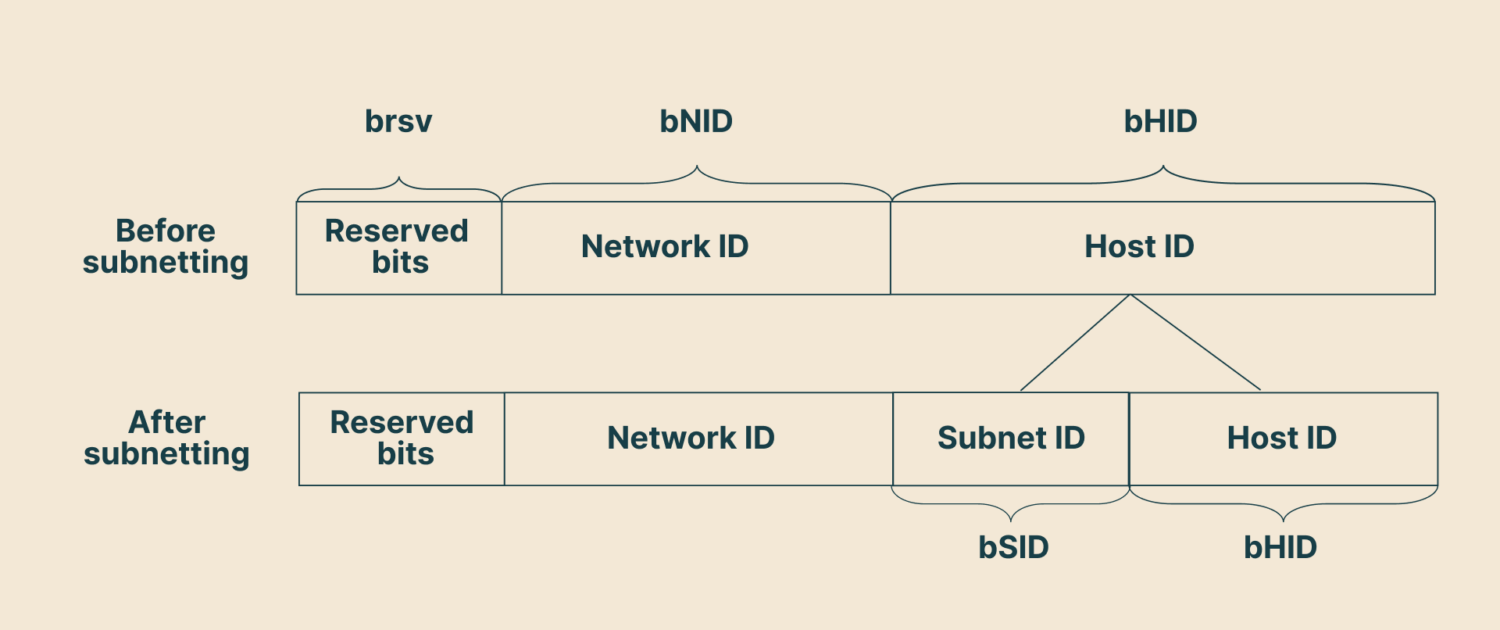How to Calculate a Subnet Mask from an IP Address
02 June 2023Calculating a subnet mask from an IP address is an essential skill for network administrators. Proper subnetting ensures efficient use of IP addresses and enhances network security by segmenting larger networks into smaller, more manageable subnetworks. Here’s a streamlined guide to help you master this fundamental task.
Identify a subnet by dividing the host identifier
Calculate the Subnet Size
First, identify the subnet size, which is usually expressed in CIDR notation.
CIDR (Classless Inter-Domain Routing) notation specifies the network’s prefix length, such as /24 for a subnet with 256 IP addresses. The prefix length indicates how many bits are used for the network portion of the address, while the remaining bits are used for host addresses within the subnet.
Translate the CIDR Notation to Binary
Next, translate the CIDR notation into binary form. For instance, /24 corresponds to 24 network bits: 11111111.11111111.11111111.00000000. Each ‘1’ in the binary string represents a bit used for the network, while each ‘0’ represents a bit used for hosts. This step is crucial because it forms the basis for determining the subnet mask.
Populate the Subnet Mask
Fill the network bits with “1” and the host bits with “0.” For /24, this results in a subnet mask of 255.255.255.0 in decimal form. To break this down further, the binary sequence 11111111 translates to 255 in decimal, and 00000000 translates to 0. Therefore, the subnet mask for a /24 network has three octets of 255 and one octet of 0.
Example Calculation of a Subnet
To calculate the subnet mask for 192.168.1.0/24:
- Convert /24 to binary: 11111111.11111111.11111111.00000000
- Resulting subnet mask: 255.255.255.0
Let’s see another example for better understanding. For a /26 subnet:
- Convert /26 to binary: 11111111.11111111.11111111.11000000
- Resulting subnet mask: 255.255.255.192
This process demonstrates how the subnet mask changes with different CIDR notations, offering varying numbers of host addresses per subnet.
To make your life easier, Brander Group has a resource that does the work for you. To quickly define subnets, please visit our IPv4 Subnet Calculator
In Conclusion
Understanding CIDR notation, binary conversion, and subnetting principles is crucial for defining network boundaries and managing IP address allocation. Mastery of subnet masks is vital for efficient IP network management and configuration. Proper subnetting prevents IP address exhaustion, simplifies network troubleshooting, and improves overall network performance. Stay informed, stay tech-savvy, and ensure your network is well-structured and secure.
◼️
Other Popular Blog Posts
Discover more from Brander Group
Subscribe to get the latest posts sent to your email.



